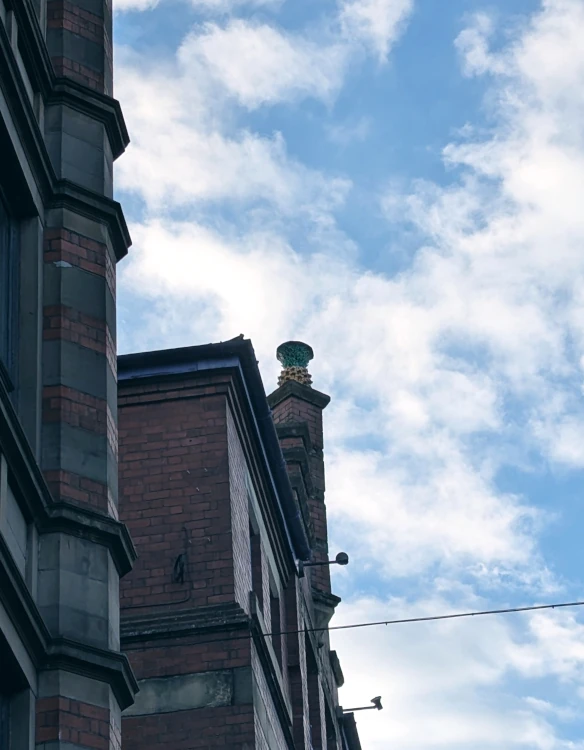Manchester has a rich industrial history in cotton and machine engine invention and manufacturing, which changed the entire world. With Britain’s first ‘true’ canal built in Manchester, the Bridgewater Canal (1761), it gave way to the industrial revolution of ceramics in Stoke-on-Trent, allowing clay to be carried more economically from as far as Cornwall, which is rich in Cornwall China Clay and other ceramic materials. While Manchester doesn’t have a great history of ceramics itself, it does have a growing pottery scene and a number of notable galleries and museums to see interesting modern and historical ceramics.
Manchester Art Gallery

Manchester Art gallery hosts over 3000 pieces of ceramics including the likes of famous contemporary artists such as Grayson Perry, a huge ceramic pineapple by Kate Malone (located by the café), and more historically significant pieces such as Wedgwood’s jasperware, which have been manufactured since 1775. We like a piece by Leah Jensen, a porcelain ceramic vessel, that reportedly took over 130 hours to carve a network of geometric facets, abstractly based on renaissance pictures.
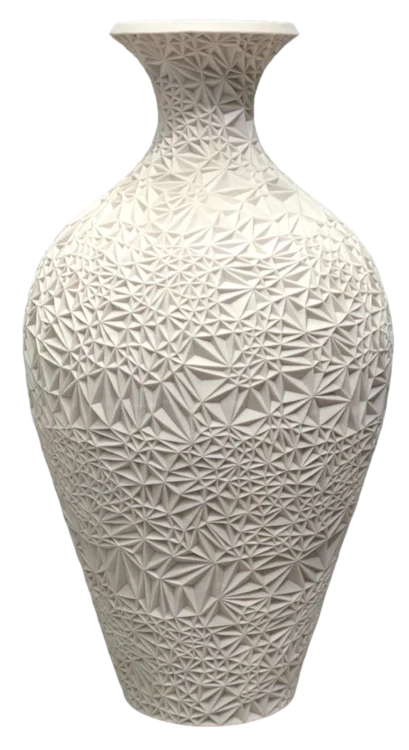
Leah Jensen
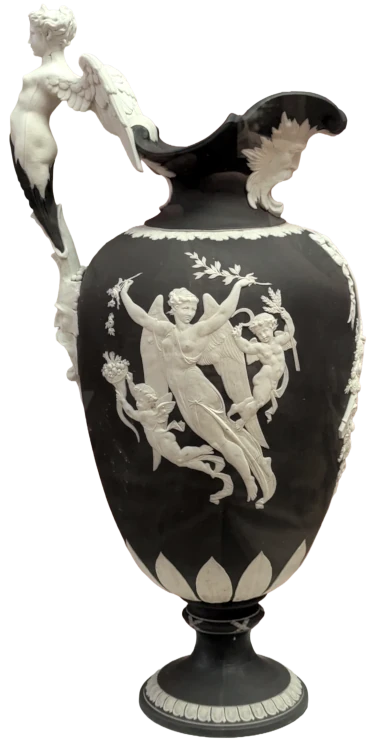
Wedgewood’s black & white Jasperware, Peace & War Water Jug 1878
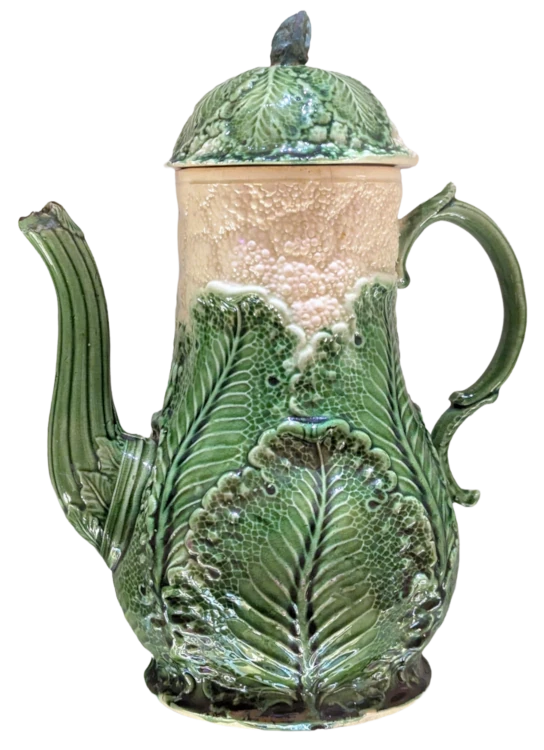
Cauliflower Coffee pot produced in Staffordshire 1760-1780
Janet Boston, curator of ceramics at Manchester Art Gallery says making a recommendation of what to see is like picking a favourite child, but that Manchester Art Gallery is ” best known for the historic collection of early English slipware, plus local factory Pilkington’s Lancastrian Pottery. Examples of both of these collections, plus a lot of other interesting pieces can be seen in the Study Room, just off Gallery 19, on the second floor. This room (which some visitors probably miss) contains a display of the highlights from the collection, displayed in chronological order. Besides the aforementioned pieces , there is a rare Korean stoneware ‘moon jar’, and pieces by Walter Keeler, Elizabeth Fritsch and Stella Crofts there.”
Historical Ceramics at Manchester Museum
Manchester museum has a large collection of historic ceramics from all over the world and throughout the ages. We spoke to Christopher Griffiths, curator of Archaeology at Manchester Museum, who gave a number of fantastic historic pottery to see in the museum including:
- A glazed ceramic hedgehog perfume bottle, items of which were commonly traded between Egypt and Greece in the 5th and 6th centuries BCE. Egypt/Sudan Gallery.
- Burnished terracotta Greek amphoras with sgraffito decoration showing scenes with hoplites. Thought to be 520-10 BC. Archaeology gallery.
- An Iron Age (750-600 BC) jug from Cyprus known as an oinochoe (pictured below), which looks wheel thrown with either sgraffito or a slip painted design done by placing the piece on the wheel. Archaeology gallery.
- A 5500 year old ‘Hippo Bowl’ from Egypt, a favourite of Campbell Price (Curator of Egypt & Sudan). Egypt & Sudan gallery.
- Several pieces of Roman Samian ware, a form of fine tableware that was made in Gaul (now France) – many were found during excavations in Manchester City Centre. See, for example, this Samian ware bowl fragment that was found between Chester Road and Jackson Street. It uses terra sigillata, a slip made of the finest clay particles which is painted on the surface of the pot to make it water tight, a common technique in Roman pottery. Archaeology gallery.
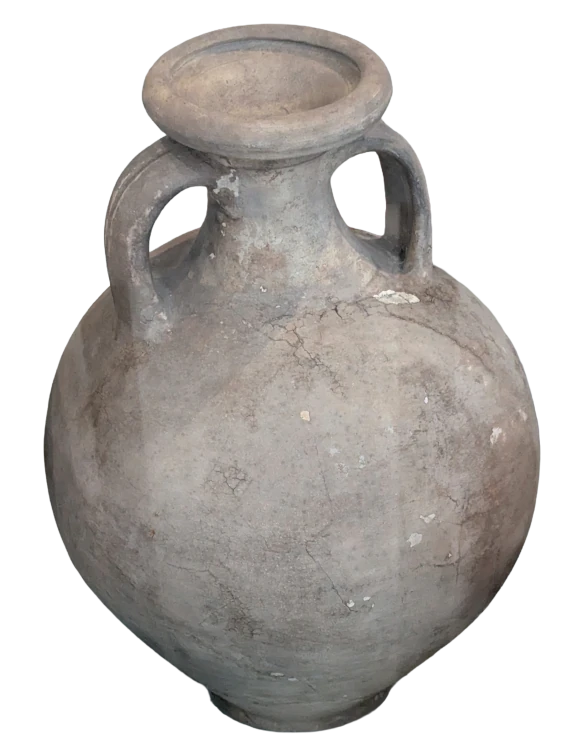
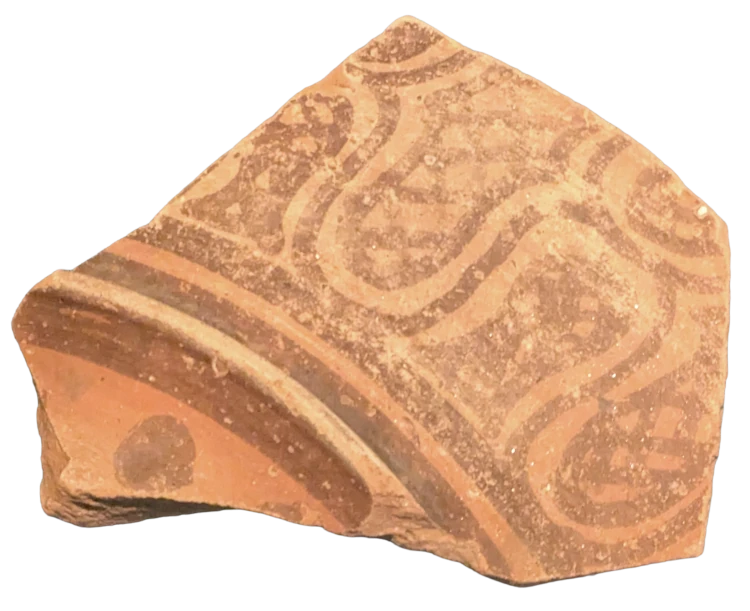
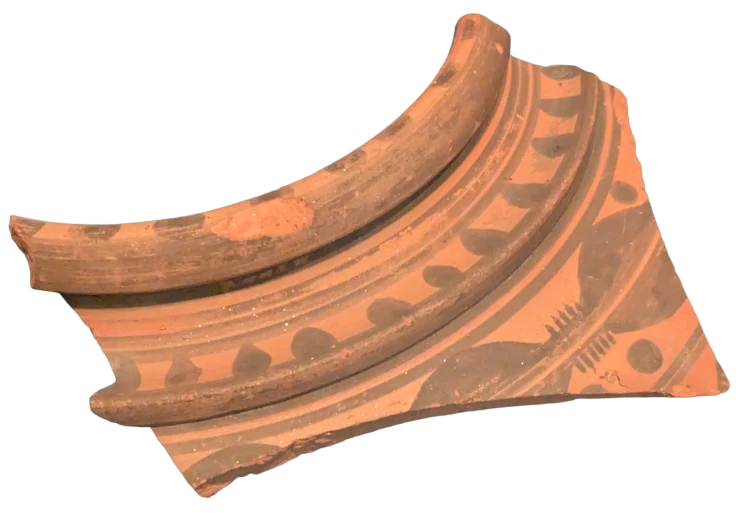
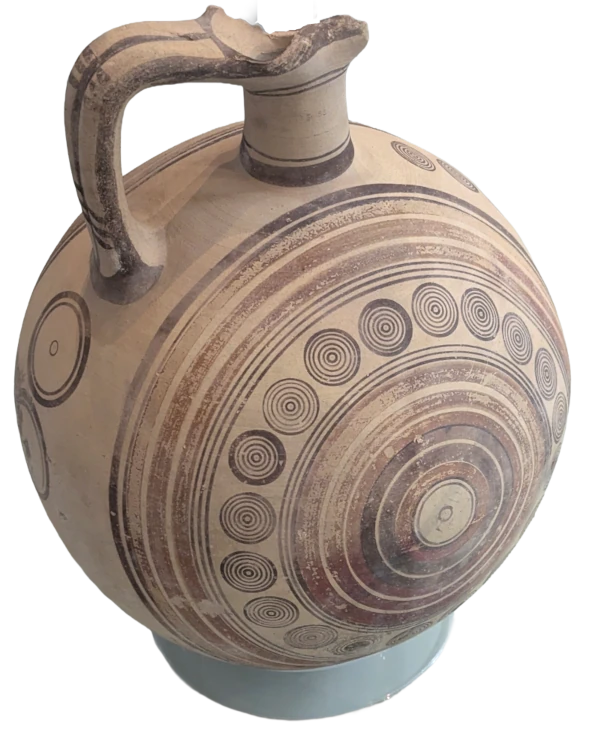
Ceramics in the Northern Quarter
There are a few curious and interesting ceramics in the Northern Quarter. In 1998 Kate Malone had another ceramic pineapple made and crane lifted onto a chimney in the Northern Quarter, it’s on Thomas street above Wolf at the Door. Why the pineapple? Well in the 17th century it was the rarest of fruits and a dinner host would rent a pineapple as the dinner table’s centrepiece to show their hospitality and wealth. It’s something you’d walk past unnoticed unless it was pointed out to you.
Northern Quarter Ceramic Tile Street Signage
Apart from the Northern Quarter Pineapple, another Northern Quarter ceramic staple is it’s street signage. The Northern Quarter urban regeneration in the 1990s had Liam Curtin as lead concept artist. Liam collaborated with Tim Rushton on it’s distinctive ceramic tile street names which are blue on white for streets which are North/South and white on blue for streets which are East/West helping you know your direction.
Buying Ceramics & Pottery in Manchester
Manchester isn’t known for its contemporary ceramics, but the Royal Exchange Theatre did host an excellent craft shop displaying some of the best contemporary ceramic artists in the UK. I remember seeing this fabulous work as a teenager when my mum Wendy, founder of 7 Limes, took us to a theatre show, and we spent sometime looking at the pieces in the craft shop. It has since changed to be more of a mid-range craft and gift shop with a higher focus on jewellery, and there hasn’t been anything in the city to replace this yet.
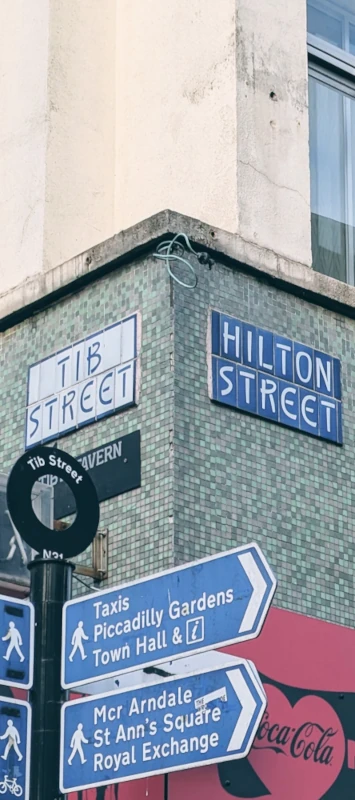
Shops & Galleries
There aren’t many places to buy handmade ceramics in Manchester at all, however, Form Lifestyle Store, down a quaint street in the Northern Quarter, work with small independent UK makers including some potters. There’s ceramic items in art gallery gift shops such as Manchester Art Gallery, Whitworth Art Gallery, Manchester Museum, and Waterside Arts in Sale, although these collections can be quite minimal in quantity. Then there’s occasional ceramics exhibition at galleries like Contemporary Six who exhibited works by Ken Matsuzaki in 2019.
Shows
There aren’t many ceramics shows in Manchester either, but one where you can see ceramics is the Great Northern Contemporary Craft Fair, a show of 150 designer-makers and craft artists. It’s once a year and usually hosted at Victoria Baths in the Autumn. You’ll likely see a few higher end ceramic pieces at Manchester Contemporary, and a newer show is the Manchester Ceramics Fair. While Manchester’s ceramics scene is beginning to rise in quality, the Fair’s last show reportedly had a packed out room in Whitworth Art Gallery. Lastly and not least there’s our annual Manchester Ceramics Winter market where we open our studio to the public with work from our members, tutors, seconds, and samples on sale for 2 days, AND you can always buy handmade ceramics in Manchester directly from your favourite makers.

